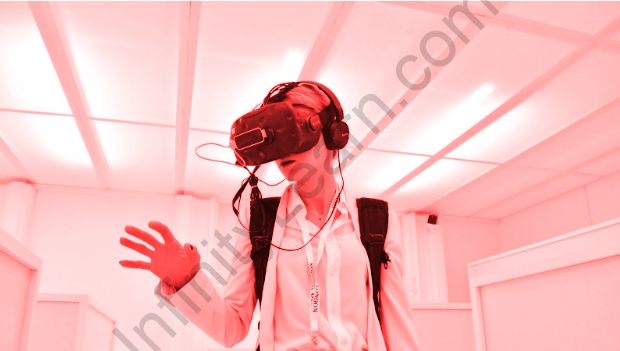Table of Contents

Virtual reality is revolutionizing autism research,” says Spectrum. The technology expands our understanding of the disorder’s intricacies and allows neurotypical folks to see what their neurodiverse loved ones perceive on a daily basis. It can, most importantly, allow autistic persons to describe and explore their environment on their own terms. According to Forbes magazine, virtual reality technology is being embraced by children, parents, teachers, counsellors, and therapists to help people better communicate and connect with each other and the world around them. Non-autistic people can also benefit from the technology since it can help them better grasp what it’s like to live with autism and dispel some common misconceptions about the illness. According to Forbes, the future of autism and virtual reality is “unprecedented.”There are no other media that comes close to “putting you in the shoes” of a person with autism.
Situations in the Real World are Simulated
VR developers and autism researchers originally collaborated in the 1990s, using the technology to create virtual worlds that replicated real-world scenarios that are distressing for autistic people. It was done in the hopes that exposing people to this level of information would help them prepare for what was to come. Virtual reality was employed by the Center for BrainHealth and the Child Study Center at Yale University’s School of Medicine to help young adults with autism spectrum disorder learn how to live independently and manage their finances. Graduates of the programme learned how to sit through a job interview, deal with a neighbour’s problem, and even go on a date. Virtual reality technology has been utilized to assist autistic children in preparing to talk with another person or group of people. The avatars in the simulation faded away if the person didn’t make eye contact (which was tracked by the VR headset). Instead of staring straight ahead or downward, this mechanism encouraged children to look around the room and maintain eye contact with the avatars.
How Virtual Reality Can Assist People With Phobias
Autistic children also suffer from phobias, which is another area where virtual reality might help. The following phobias are frequently associated with autistic symptoms: fear of public places, fear of embarrassment, and fear of strangers. Clients typically receive cognitive behavioural therapy to help them channel their concerns into more positive behaviour, but virtual reality’s vision and imagination can assist bridge a large gap in the therapy. The Blue Room was built by experts at Newcastle University as an immersive treatment experience specifically tailored to alleviate anxieties in autistic youngsters. Helping children practise social skills in a safe environment has proven to be an excellent approach for reducing anxiety in both children and their parents. When presented with unpredictable and uncontrollable conditions that can provoke autism-related anxieties, they have an experience. Two weeks after the Blue Room treatment finished, 25% of the 32 youngsters who had received it reported a reduction in their phobia symptoms. It was 38 per cent after six months. Finally, the virtual reality component enabled the kids to better confront their fears and learn to control their reactions.
Exploring Neurodiversity and Raising Awareness
Virtual reality is increasingly being used to share personal experiences of living with autism, as well as to build a simulation where an autistic person can practise social skills or control anxiety. This serves to promote awareness of the condition as well as to investigate the diversity of autistic living that activists wish to highlight.A VR game named Beholder is an example of a Blue Room invention. Matt Clark, who has a 15-year-old son with severe autism, created it. Matt designed Beholder in order to better comprehend his nonverbal son’s perspective on the world. He said he didn’t want to focus on the negative sides of autism in an interview with Forbes, but some of the amazing elements of neurodivergent perception,” he wanted to learn more about.
In 2016, a creative firm created an immersive experience for the National Autistic Society of the United Kingdom, depicting the effects of isolation and overstimulation that an autistic child could encounter at a shopping mall.
Direction & Purpose
A research professor at the University of Southern California who pioneered the use of virtual reality technology in psychiatry told Science magazine that the perceptual experience provided by VR has never been available before. Virtual reality simulations may help autistic youngsters feel more secure in strange situations, according to researchers. The University of the West of England in Bristol gave 11 autistic children a virtual reality tour of a local scientific museum a few days before they visited the institution. According to the research team’s leader, the pupils felt “less apprehensive, less agitated, and better prepared for that space.” The teachers also mentioned that the children felt uncomfortable throughout the tour of the real museum.
FAQ’s
What role does virtual reality play in the treatment of autism?
People with autism are increasingly using VR to convey their own experiences, both to raise awareness of the condition and to capture the cognitive and perceptual differences. Using VR to create role-playing environments for practising social skills or alleviating phobias has proven to be successful - however, people with autism are increasingly using VR to convey their own experiences, both to raise awareness of the condition and to capture the cognitive and perceptual differences.
How do you deal with stress in an autistic child?
Find sensory toys that can help a child relax when he or she is stressed. Squeezy toys, weighted blankets, a relaxing DVD or book, a swing set, or even a pet are examples of these. Allow your child time and space to calm down and learn to self-regulate if they have a meltdown.
What is virtual autism, and how does it work?
Virtual autism is linked to extended exposure of children under the age of four to mobile, television, and computer displays, according to psychiatric experts. Delay in speech, difficulties in social engagement, and behavioural abnormalities are some of the signs.



